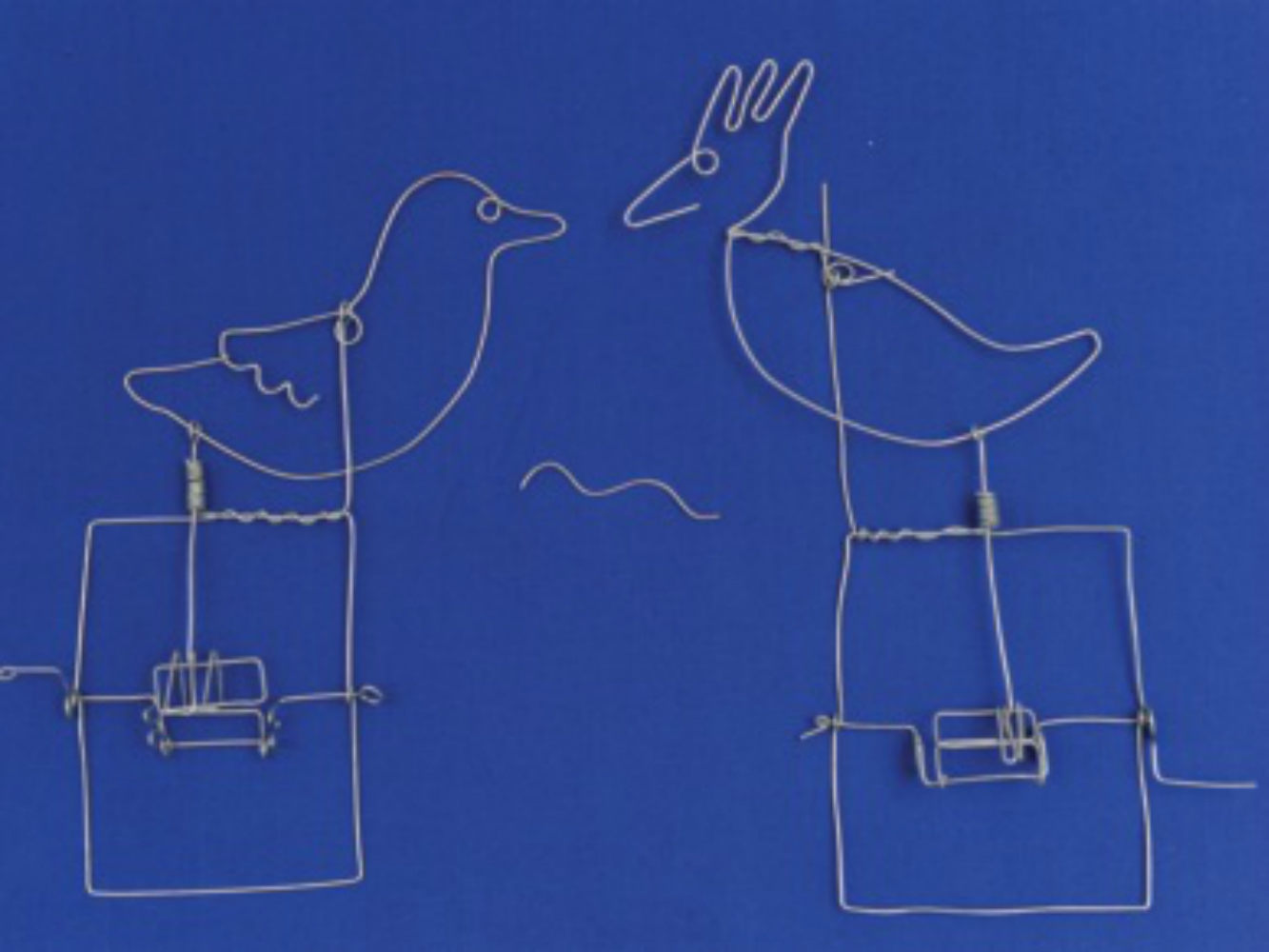Making things with wire looks simple, but it can be challenging. Pick up a few wire-bending tricks, though, and you can sketch in 3 dimensions and make anything from a tiny, delicate figurine to a large, mechanical sculpture with moving parts.
Like sketching with a pen on paper, there’s no right way to do it, but a few techniques can help you get started. We’ll show you how to make a functional crank toy using a few basic tools and ordinary fence wire. Along the way, you’ll learn some important bends and structures you can use in your own creations.
Our crank toy is made up of 5 pieces: frame, crankshaft, piston, connecting rod, and art. Each part is made separately using individual pieces of wire, but you need to construct them in the right order so they’ll fit together correctly. To make it easier, we’ve made a template (PDF) to guide you. Download it below, and use the template and the photos here for reference.


